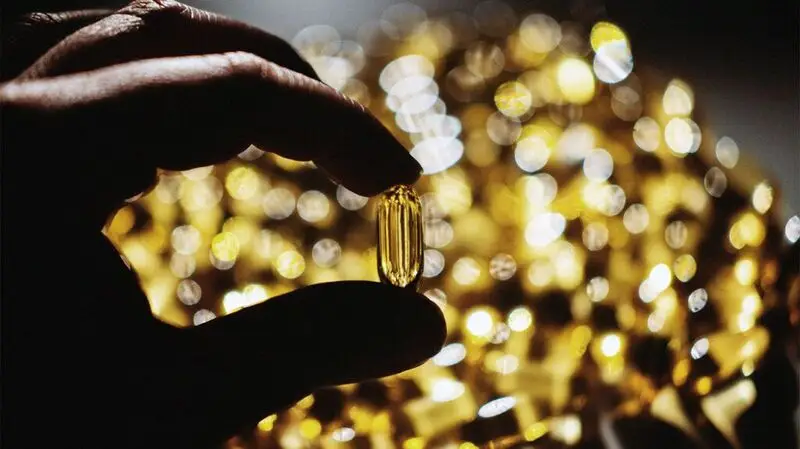
- Type 1 diabetes occurs when β cells in the pancreas stop producing insulin, the hormone that controls blood glucose.
- This autoimmune condition may develop at any age but commonly starts during childhood and adolescence.
- Following diagnosis, people often experience a ‘honeymoon phase’, during which some β cells continue to function and produce insulin.
- A study has now found that high doses of vitamin D2 may extend this honeymoon phase and delay the symptoms of diabetes.
Type 1 diabetes is an autoimmune disorder in which
The condition often develops in childhood or early adulthood, although it can occur later in life.
- increased thirst and urination
- increased hunger
- blurred vision
- fatigue
- unexplained weight loss
- a life-threatening condition called diabetic ketoacidosis (DKA).
Soon after diagnosis, people with type 1 diabetes will often experience a lessening of symptoms, known as the
In the
The longer the honeymoon phase, the lower the likelihood of developing complications from type 1 diabetes.
Now, a study has found that vitamin D2 can help maintain the functioning of β cells, which could extend the honeymoon phase.
The findings are published in
“The study suggests that vitamin D2 may help preserve beta cell function, which are the cells responsible for insulin production. The exact mechanisms aren’t fully understood, but vitamin D2 may play a role in regulating the immune system and reducing inflammation, which could contribute to beta cell health.”
— Dr. Daniel Ganjian, board certified pediatrician at Providence Saint John’s Health Center in Santa Monica, CA, speaking to Medical News Today, welcomed the findings.
However, Dr. Robert Gabbay, M.D., Ph.D., chief scientific and medical officer at the American Diabetes Association, cautioned:
“The study is a secondary analysis of another study, and it has some limitations as a result of that.”
Vitamin D is essential for good health, as it helps the body absorb calcium, which is used for building, maintaining and repairing bones. It is also
There are two forms of vitamin D — D2, also known as
Most vitamin D2 is made by sun exposure, but mushrooms and yeast also make D2 when exposed to the sun, so keeping your mushrooms somewhere sunny before eating them will increase their D2 content. Some manufacturers fortify products such as dairy and plant milks, orange juice and cereals with vitamin D2.
Oily fish, such as trout, salmon, tuna, and mackerel, and fish oils are the best sources of vitamin D3, so people who do not eat fish must get it from fortified foods or supplements.
In this trial, the researchers recruited 48 children and adolescents, aged between 10 and 21 years, who had been diagnosed with type 1 diabetes no more than 3 months before the start of the trial. After initial testing, they excluded 12 children from the trial.
They then randomly allocated the remaining 36 to two groups of 18. By dividing each group into those of normal-weight (BMI below 85th centile) and overweight/obese (BMI on or above 85th centile), they created 4 groups of 9 participants.
For the double-blind trial, they gave one group (9 normal-weight and 9 overweight/obese) 50 000 international units (IU) of ergocalciferol orally once weekly for 2 months, and then once every other week for 10 months. They gave the control group similar-appearing placebo pills and pill-counting dosettes.
The researchers carried out a number of tests at three, six, nine, and 12 months after the participants had fasted overnight.
From these, they calculated proinsulin to C-peptide (
For the first 3 months, both groups had similar percent change from baseline in the area under the curve (
Both measures showed that vitamin D2 was extending the activity of β cells compared with placebo, as Dr. Ganjian explained to Medical News Today:
“The study observed an improvement in the proinsulin-to-C-peptide ratio (PI:C) in the vitamin D2 group. PI:C is an indicator of beta cell function. A lower ratio suggests more efficient insulin production.”
“Vitamin D2 supplementation shows promise in extending the honeymoon phase and potentially benefiting beta cell function in newly diagnosed T1D patients,” he added.
“This adds to the body of evidence of agents that may preserve beta cell function in early type 1 diabetes. It is an encouraging initial study, and we look forward to further research in the area.”
— Dr. Robert Gabbay
Preserving β cell function for as long as possible is a key goal in treating type 1 diabetes, and this research indicates another potential way of doing this, as Dr. Gabbay told MNT:
“This is early evidence suggesting that vitamin D may be effective in preserving beta cell function in early type I diabetes. This comes on the heels of other agents showing similar effects.”
“What would be really exciting is to see some combination of these agents dramatically affect and prolong the period of time in early type 1 diabetes during which insulin is still produced,” he added.





